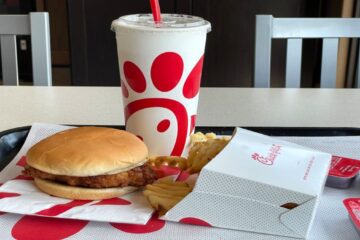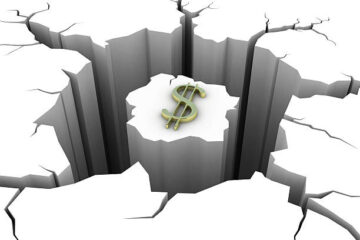President Donald Trump’s latest whipsaw tariff threats – including a 50% hike on European Union goods and demands that Apple and Samsung manufacture phones in the United States – have not only complicated global trade but are likely to delay interest rate cuts.
That’s according to Chicago Federal Reserve President Austan Goolsbee, who said May 23 that Trump’s latest tariff threats have complicated policy and likely put off changes to interest rates.
Trump’s repeated demands underscore the volatility of U.S. trade policy and provide another flash point for global worries about fiscal policy, which have sent bond yields sharply higher.
Since April 2, or “Liberation Day,” tariff threats and trade jitters have spooked buyers and sellers into a seemingly endless roller-coaster ride. Many market, economic, and financial experts have begun publicly warning of a recession within a few months, while others predict a nation stuck in a nasty stagflation.
Austan Goolsbee, president and chief executive officer of the Federal Reserve Bank of Chicago, offered an interest rate cut outlook that may frustrate those hoping for lower rates.
How tariffs impact interest rates
Central bankers are generally careful not to wade into issues of fiscal and trade policy, but are left to analyze their repercussions.
Related: Hedge-fund manager sees U.S. becoming Greece
The proposed EU tariffs would begin on June 1. In a CNBC interview, Goolsbee said the Fed’s movements likely will be on hold as it evaluates the ever-changing trade policy and how it affects inflation and employment.
Goolsbee spoke the same day Trump jolted markets again with a call for 50% tariffs on products from the European Union starting June 1, while indicating Apple will have to pay a 25% tariff on iPhones not made stateside.
Apple mostly makes its smartphones in China, though some are produced in India as well. While the impact of a costlier iPhone likely wouldn’t mean much from a larger economic perspective, worries about the stability of fiscal policy have sent bond yields sharply higher.
Fed awaits clarity on latest tariff proposals
Goolsbee said on “Squawk Box” when asked about Trump’s new actions. “Over the longer run, if they’re putting in place tariffs that have a stagflationary impact…then that’s the central bank’s worst situation.”
Related: Jim Cramer sends blunt message after Trump’s latest tariff surprise
“So I think we’ll have to see how big the impacts on prices are,” he added. “I know people hate inflation.”
The Fed’s benchmark overnight borrowing rate is targeted between 4.25% and 4.50%, where it has been since December. The actual rate most recently traded at 4.33%.
Goolsbee is still optimistic that the longer-run trajectory is toward solid economic growth despite Trump’s April 2 tariff announcement that rattled markets.
“I’m still…hopeful that 10 to 16 months from now, rates could be a fair bit below where they are today,” he said. Goolsbee is a voting member this year on the rate-setting Federal Open Market Committee, which next meets June 17-18.
At the meeting, officials will update their economic and interest rate projections. The committee indicated two rate cuts this year in its last update in March.
Markets expect the Fed will cut twice this year, with the next move not happening until September. Goolsbee did not commit to a course of action from here amid the uncertainty.
Related: Veteran fund manager sends hard-nosed message on Fed interest rate policy


